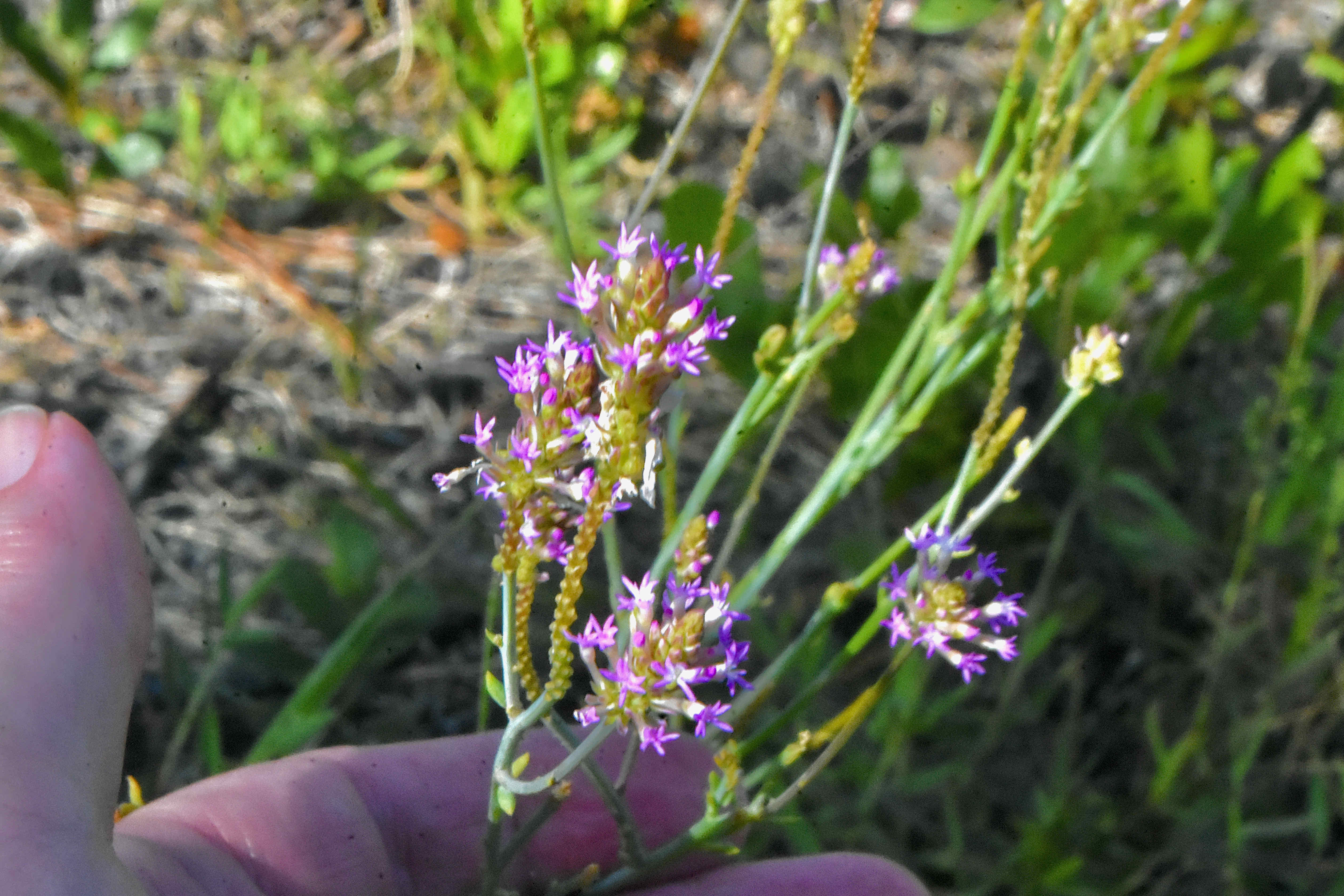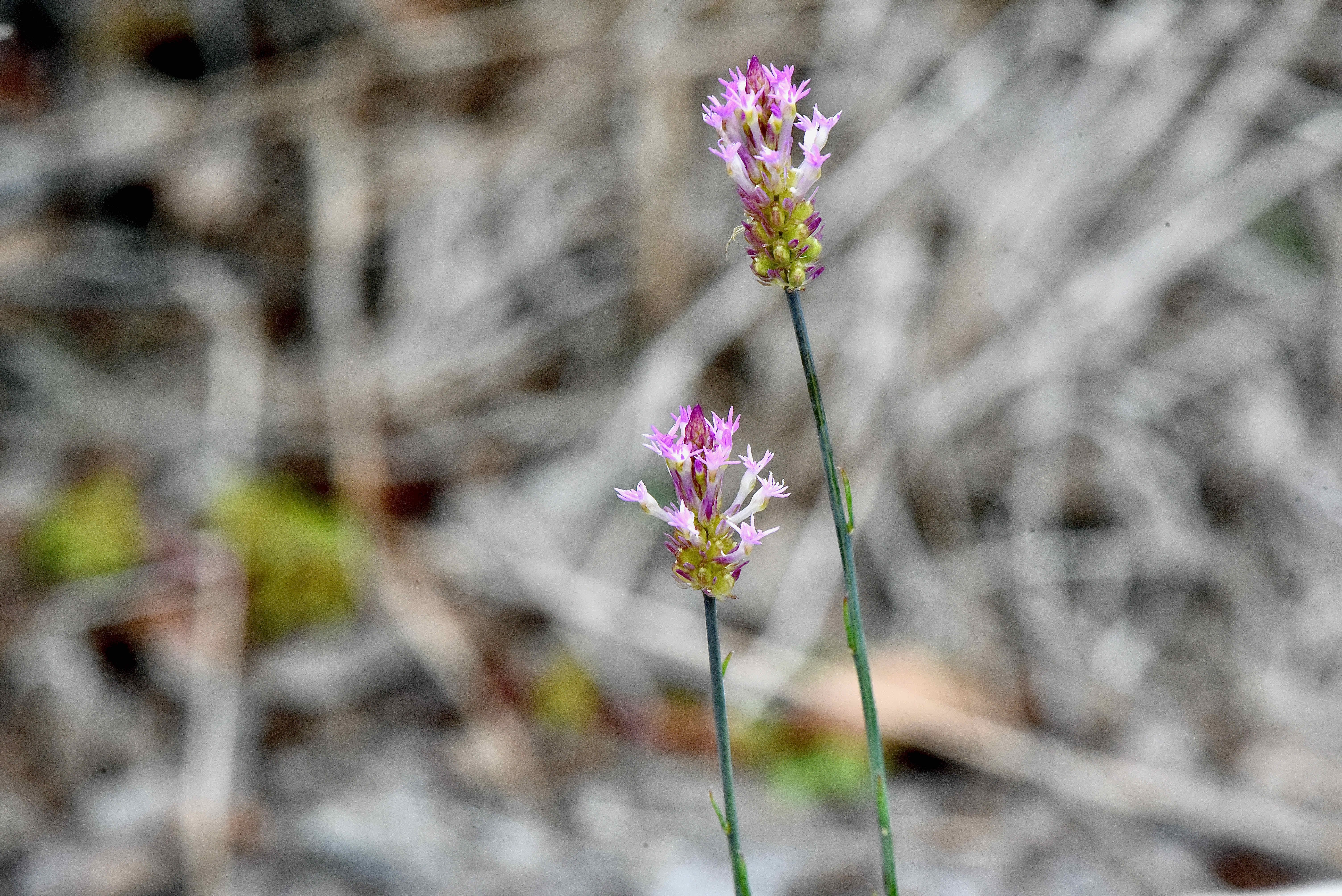
Procession flower, photographed at Military Trail Natural Area, Deerfield Beach, Palm Beach County, in March 2022.
The family resemblance isn’t all that evident, at least not at first. But you look and you look, and yeah, it’s there. Procession flower is a member of milkwort family. Should have seen it sooner.
At least that was our reaction when we spotted and identified it for the first time, a single plant trail side in Yamato Scrub Natural Area.
Procession flower, aka pink milkwort and scientifically known as Polygala incarnata, is a Florida native found throughout most of both the Panhandle and the Peninsula. It is not found in the Keys, however.
Its natural range extends throughout eastern and central United States and as far north as Ontario, Canada, where it’s considered endangered. It’s also listed as endangered in New Jersey and Wisconsin and vulnerable to extinction in Arkansas. In Michigan, it’s been catalogued in one county a century ago and may be extirpated. Beyond the U.S., procession flower is also found in Mexico and Central America.
The Institute for Regional Conservation in Delray Beach considers it rare in South Florida.
Procession flower is a whisp of a plant. The plants we’ve seen have been less than a foot tall, though some sources say it can reach two feet. The flowers sit atop a thin, smooth, pale-green stem. Leaves are sessile, meaning no leaf stem, sparse in numbers, almost scale-like and arranged alternately along the stem. They are either angled acutely upward or straight up along the stem.
The flowers are small, vary in color from deep purple, to pink, to pink and white. They are arranged in dense clusters called racemes. Though individually small, numbers amplify their effect. Craig Huegel, owner of the Hawthorn Hill nursery and author of the Hawthornhillwildflowers blog, says the open petals look like sea urchin. And, if you think about it, they do.
In South Florida, procession flower blooms all year; a bit to our north, the season extends from early spring into the fall. Still farther north, it’s late spring to early summer into fall.
Preferred habitats for procession flower include places moderately wet to moderately dry. Where we’ve found it tend toward the dry, scrubby side, however.
In our mind we compared it with other milkworts, like big yellow milkwort or orange milkwort or candyroot. In a certain way, the closest we could come with was showy milkwort; the stem and leaves somewhat match, but showy milkwort is much, much bigger especially the leaves. And the flowers don't match. In fact, the flowers don't really match any of the milkworts we typically see. But the flowerheads do. Bingo.
It’s time to throw in the obligatory paragraph required in any story involving milkworts: Polygala means many milk, and comes from a former belief that the presence of these plants in a field indicated a good place to graze cows. Let Old Bessie munch away and she’ll produce lots of milk.
Procession flower is a member of Polygalaceae, the milkwort family.



